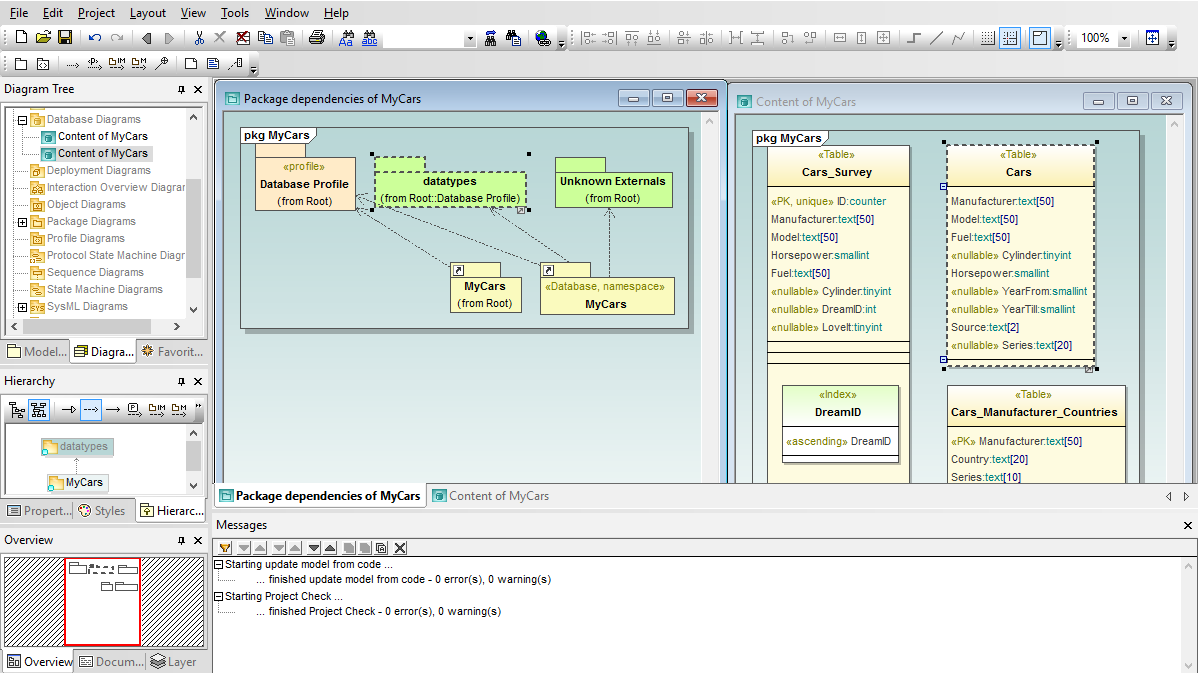Modeling Relational Databases in UML

Database designs and structures are a critical component to many development projects. Support for UML database diagrams in UModel makes it easy to extend the advantages of visual UML modeling to databases, whether you need to create UML diagrams from existing tables, modify diagrams to and sychronize the database, or design new tables and relationships.
UModel supports all major relational databases:
- Firebird
- IBM DB2 for iSeries®
- IBM DB2®
- Informix®
- MariaDB
- Microsoft Access™
- Microsoft® Azure SQL
- Microsoft® SQL Server®
- MySQL®
- Oracle®
- PostgreSQL
- Progress OpenEdge
- SQLite
- Sybase® ASE
- Teradata
You can easily import an entire relational database in a single step, or choose only the tables in the database that are relevant to your project, to model data structures along with your software application. The UModel Database Connection Wizard makes it easy to connect to your databases quickly.
The UML database diagram functionality in UModel supports multiple databases and automatically adjusts SQL dialects, data types and other specialized features based on the database type. UModel supports these database elements: database schemas, tables, views, check constraints, primary / foreign / unique keys, indexes, stored procedures, functions, triggers, database relationship associations, and database relationships with attributes.



